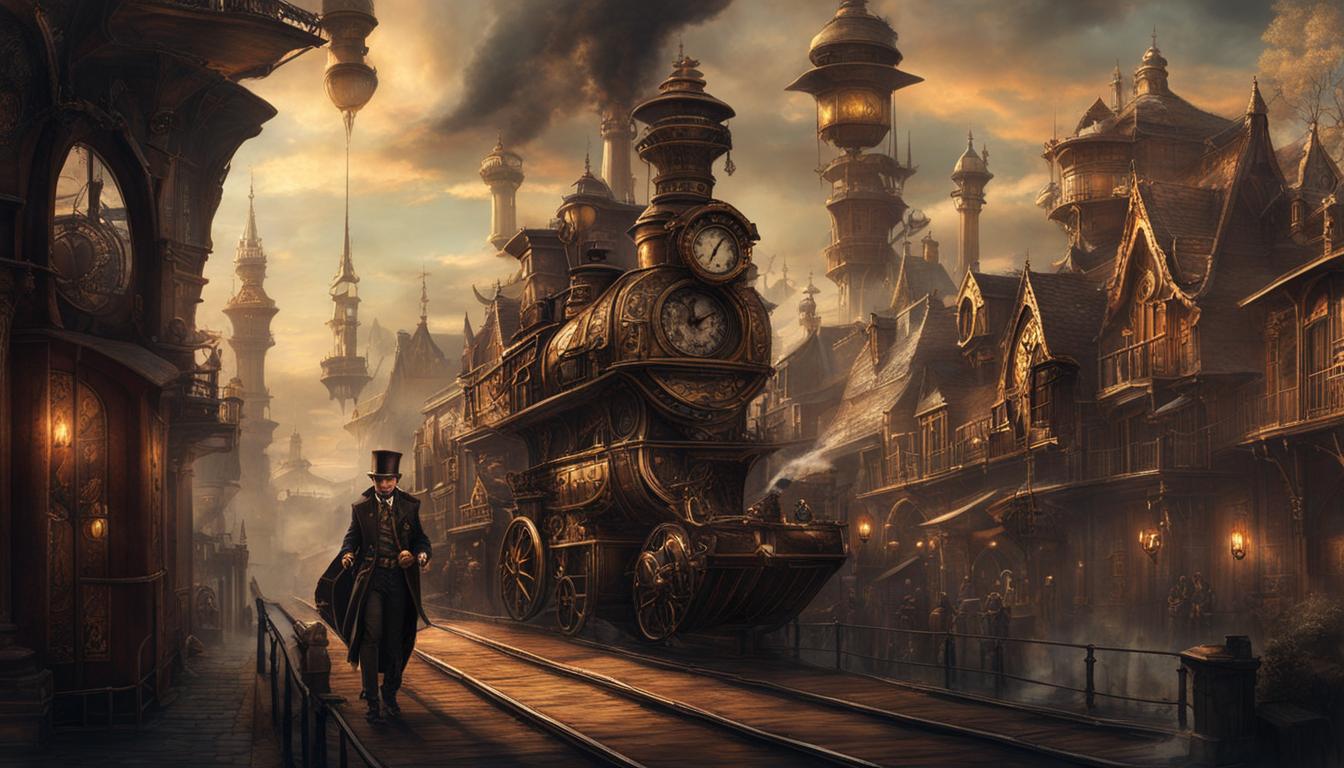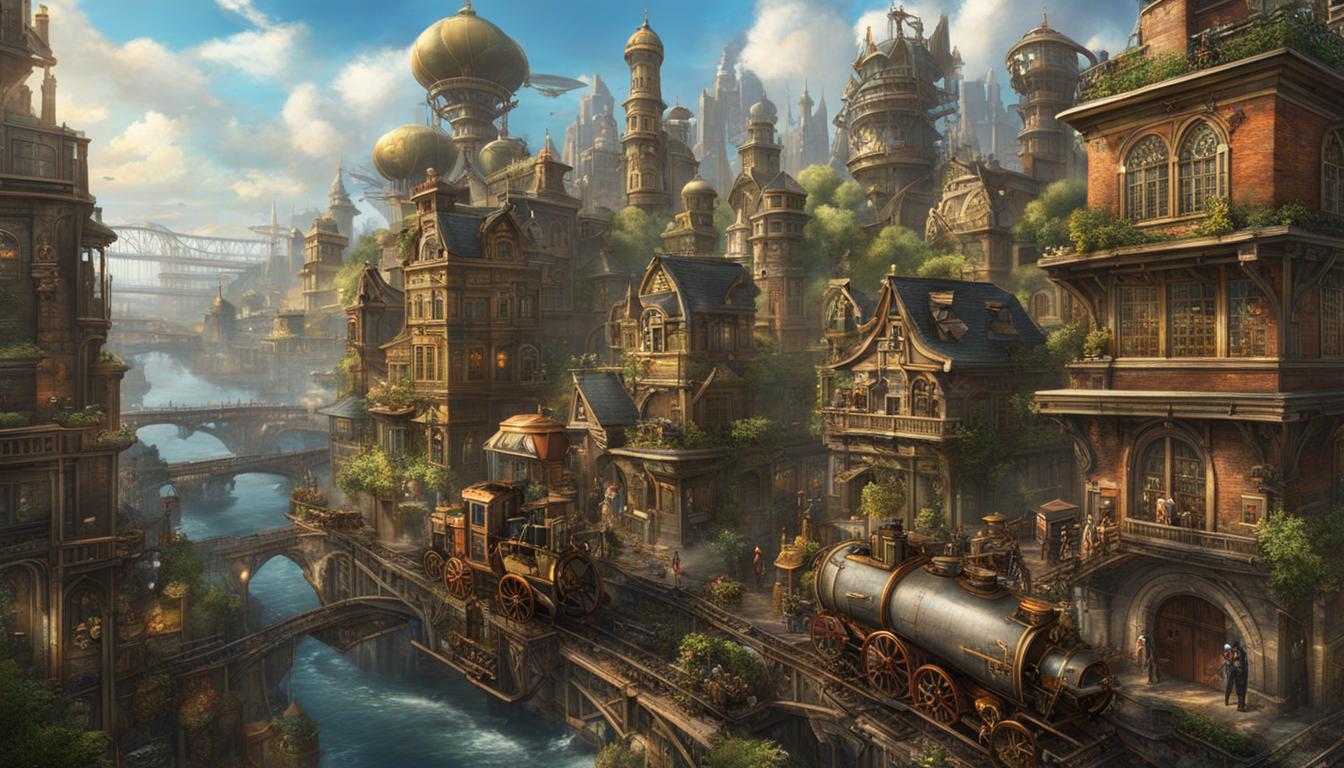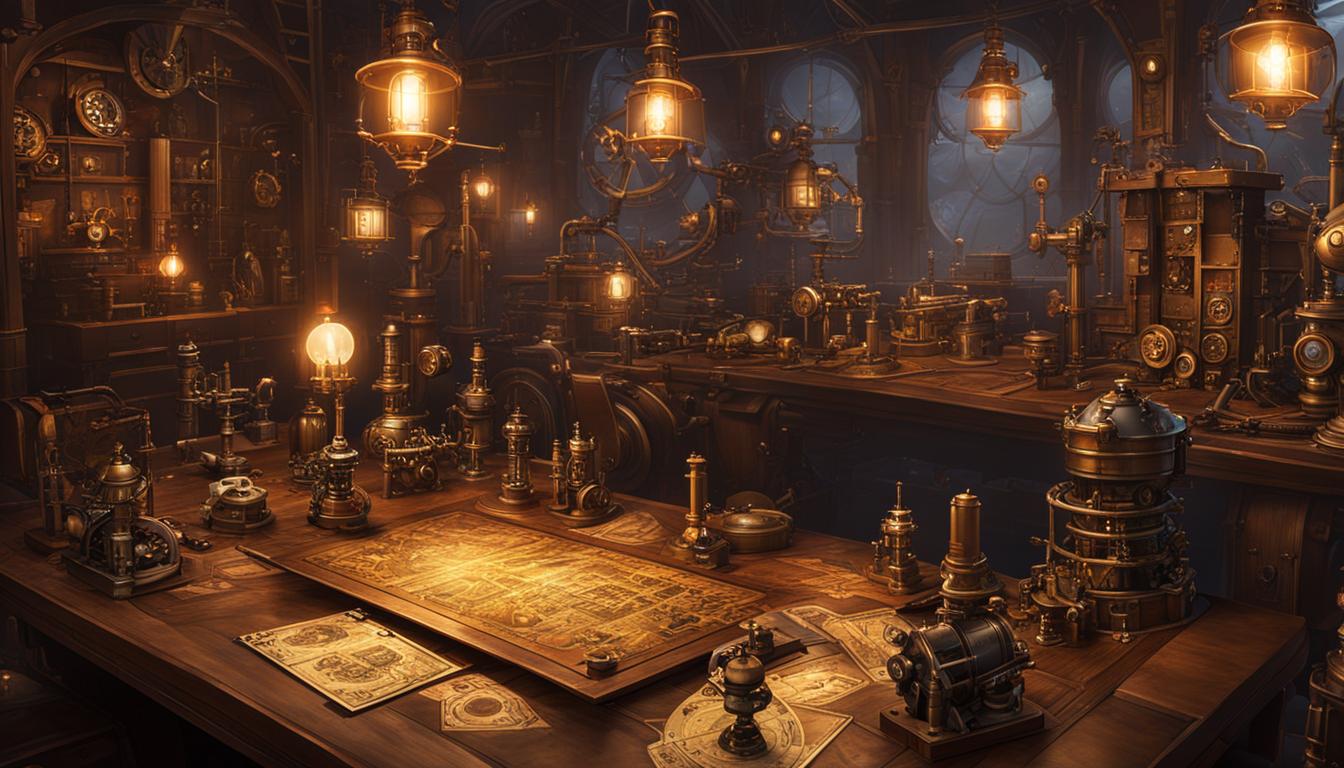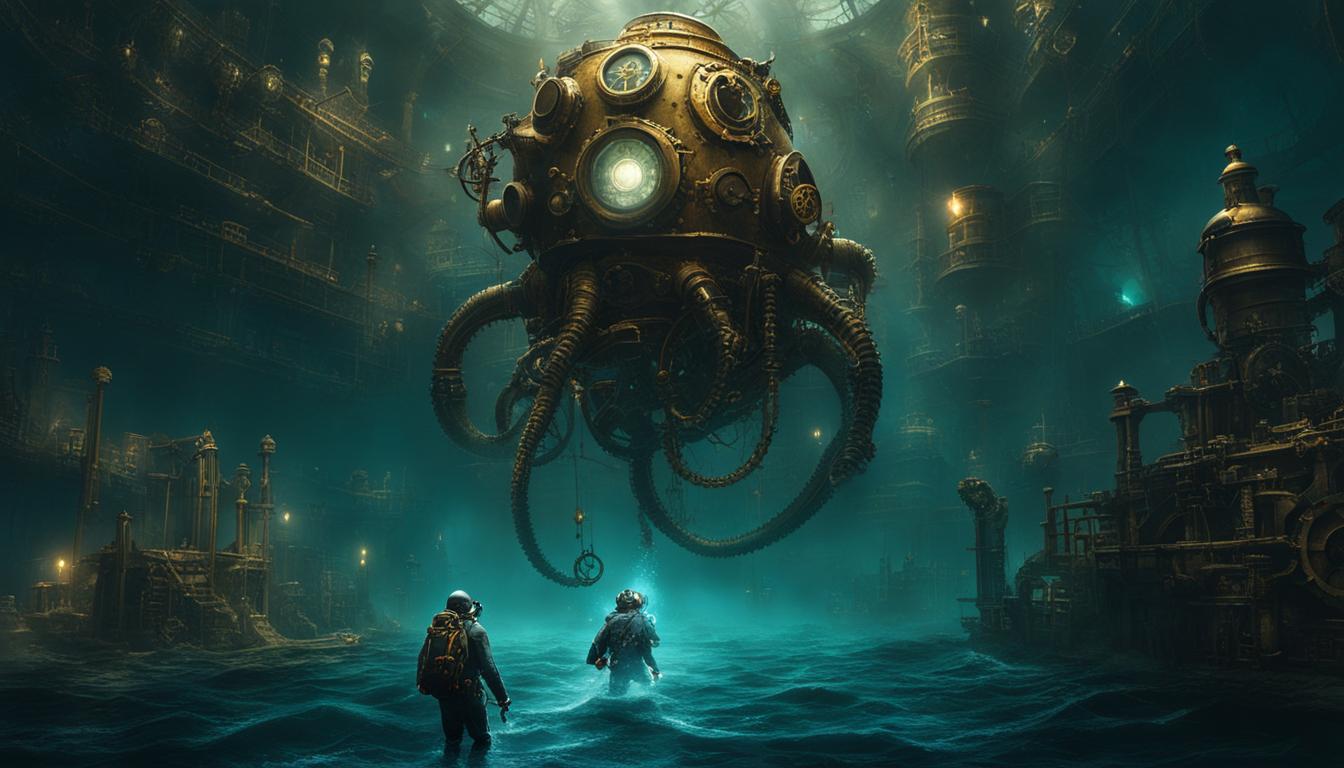Steampunk, a genre rooted in the Victorian era and fueled by steam-powered technology, is far from a one-dimensional realm. It’s a captivating universe that delves into an array of genres, each adding its unique flavor to the steampunk umbrella. From romance to espionage, fantasy to adventure, understanding the diverse genres within steampunk opens up a world of creative possibilities.
Key Takeaways:
- Steampunk encompasses a wide range of genres, offering versatile storytelling opportunities.
- The genre’s origins can be traced back to influential Victorian-era works.
- Steampunk has extended beyond literature to film, TV, and video games.
- Authors, filmmakers, and game developers contribute to the continually evolving steampunk genre.
- Steampunk’s blend of historical aesthetics and futuristic elements creates an intriguing and captivating world.
The Beginnings of Steampunk
The origins of steampunk can be traced back to the Victorian era, where influential works laid the foundation for this captivating genre. Mary Shelley’s “Frankenstein” and Jules Verne’s “Twenty Thousand Leagues Under the Sea” were among the pioneering works that explored themes of science, technology, and adventure. These literary masterpieces sparked the imagination of authors and readers alike, sowing the seeds for the development of steampunk as a genre.
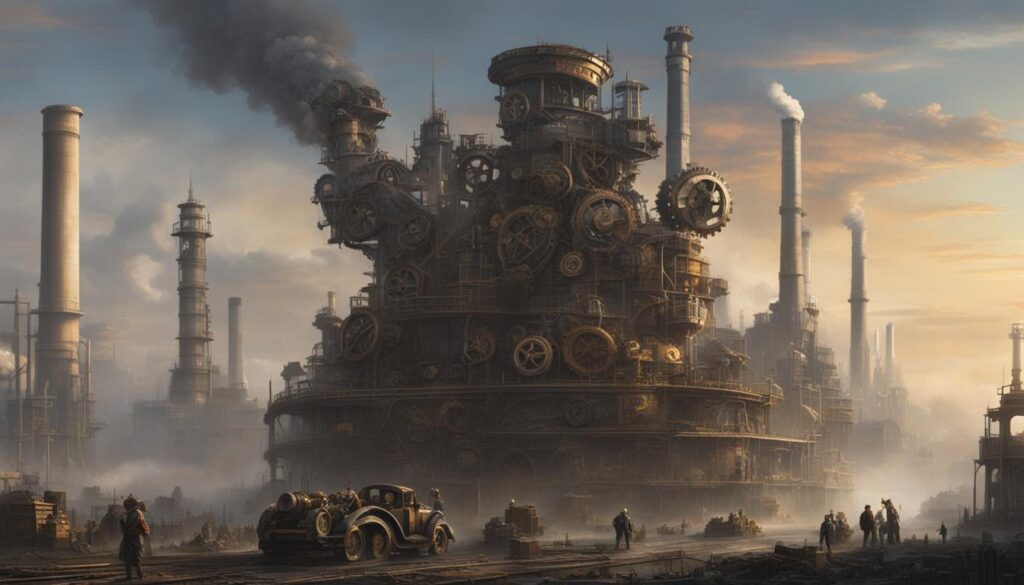
Steampunk’s roots in Victorian literature were further strengthened by other influential works of the time. Lewis Carroll’s whimsical “Alice in Wonderland” and H.G. Wells’ visionary “The Time Machine” introduced elements of fantasy and time travel, respectively, into the genre. These imaginative narratives blended historical settings with futuristic elements, foreshadowing the unique fusion that would characterize steampunk storytelling.
“Steampunk takes inspiration from the Victorian era and blends it with futuristic elements, creating a captivating world that stands the test of time.” – Anonymous
The influence of these Victorian era works is evident in the distinct aesthetic and themes of steampunk. The combination of elaborate Victorian fashion, steam-powered technology, and a sense of adventure captures the essence of the genre. With its roots firmly planted in literature, steampunk has grown and evolved beyond its origins, captivating audiences across various forms of media.
The Evolution of Steampunk
Steampunk, once confined to the pages of literature, has experienced a remarkable evolution over the years, spreading its influence to film, TV, and video games. As the genre expanded beyond its literary origins, a plethora of creative minds embraced the steampunk aesthetic and introduced it to new audiences in captivating ways.
In the realm of literature, authors like Philip Reeve and Cherie Priest have made significant contributions to the steampunk genre. Reeve’s “Mortal Engines” series takes readers on a thrilling journey through a post-apocalyptic world filled with towering mobile cities, powered by steam and set amidst a backdrop of political intrigue. Priest, on the other hand, delves into dark fantasy with her “Boneshaker” series, where a mysterious gas plagues the streets of Seattle and unearths a tumultuous past.
“Steampunk is not merely a genre but a way of life. It merges the beauty of the Victorian era with the excitement of futuristic technology, allowing us to explore endless possibilities.” – Anonymous Steampunk Enthusiast
Steampunk’s allure extends beyond the pages of books, captivating audiences on the silver screen and the small screen. Movies like “Chitty Chitty Bang Bang” have embraced the whimsical and adventurous spirit of steampunk, showcasing fantastical inventions and thrilling escapades. Meanwhile, TV series like “The Wild Wild West” blended elements of Western and steampunk genres, creating a unique blend of suspense, action, and Victorian charm.
The world of video games has also become a haven for steampunk enthusiasts, offering immersive experiences that transport players to an alternate reality. The “BioShock” series, for instance, combines elements of steampunk with dystopian themes, plunging players into a city beneath the sea and challenging them to navigate complex moral choices. Similarly, “The Legend of Zelda: Spirit Tracks” infuses steampunk concepts into its fantastical world of puzzles and adventures, inviting players to traverse an expansive kingdom using steam-powered trains.
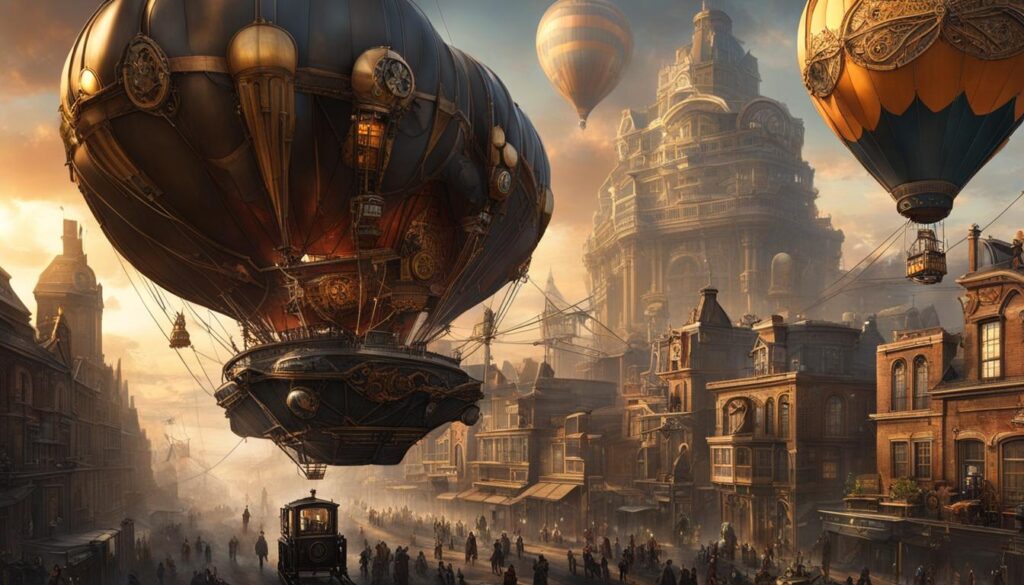
The Evolution of Steampunk in Different Media Forms
| Media Form | Notable Examples |
|---|---|
| Literature | Philip Reeve’s “Mortal Engines” series Cherie Priest’s “Boneshaker” series |
| Film | “Chitty Chitty Bang Bang” “Wild Wild West” |
| TV | “The Wild Wild West” |
| Video Games | “BioShock” series “The Legend of Zelda: Spirit Tracks” |
As steampunk continues to evolve and captivate audiences, we can expect to see even more imaginative and awe-inspiring creations that push the boundaries of this rich and diverse genre. From the pages of books to the screens of our favorite entertainment mediums, the evolution of steampunk is a testament to the enduring fascination with its blend of history, fantasy, and futuristic technology. Embrace the world of steampunk and let your imagination soar!
Conclusion
As we conclude our exploration of genres within steampunk, we are left in awe of the rich tapestry of storytelling possibilities that this genre offers. From the allure of romance to the thrill of espionage, steampunk captivates readers and viewers with its blend of Victorian aesthetics and fantastical elements.
Throughout our journey, we witnessed how steampunk has evolved beyond its literary origins and infiltrated other forms of media. From the silver screen to the realm of video games, steampunk has left an indelible mark, inspiring creators and captivating audiences.
At the core of steampunk lies its ability to transport us to an alternate reality where steam-powered contraptions coexist with futuristic advancements. It allows us to explore the endless possibilities of the human imagination, blending history and fantasy in a way that both intrigues and delights.
So, whether you find yourself lost in the pages of a steampunk novel, engrossed in the intricate details of a steampunk film, or immersed in the gameplay of a steampunk-inspired video game, remember that steampunk is so much more than a single genre. It is a realm of diverse genres waiting to be explored, each offering its own unique flavor and excitement within the expansive world of steampunk.
FAQ
What genres can be found within the steampunk genre?
The steampunk genre encompasses a wide range of genres, including romance, adventure, espionage, fantasy, and more. It offers a rich tapestry of storytelling possibilities.
What are the origins of steampunk?
Steampunk can be traced back to the Victorian era, with works like Mary Shelley’s “Frankenstein” and Jules Verne’s “Twenty Thousand Leagues Under the Sea” laying the foundation for the genre. These works explored themes of science, technology, and adventure.
How has steampunk evolved beyond literature?
Steampunk has expanded into other forms of media, including film, TV, and video games. Movies like “Chitty Chitty Bang Bang” and TV series like “The Wild Wild West” have embraced the steampunk aesthetic. Video games, such as the “BioShock” series and “The Legend of Zelda: Spirit Tracks,” have incorporated steampunk elements into their gameplay and storytelling.
What is the significance of steampunk in different media forms?
Steampunk has become a popular and influential genre across various forms of media. It showcases the diverse genres that exist within its realm, captivating audiences with its blend of Victorian aesthetics and futuristic elements.

